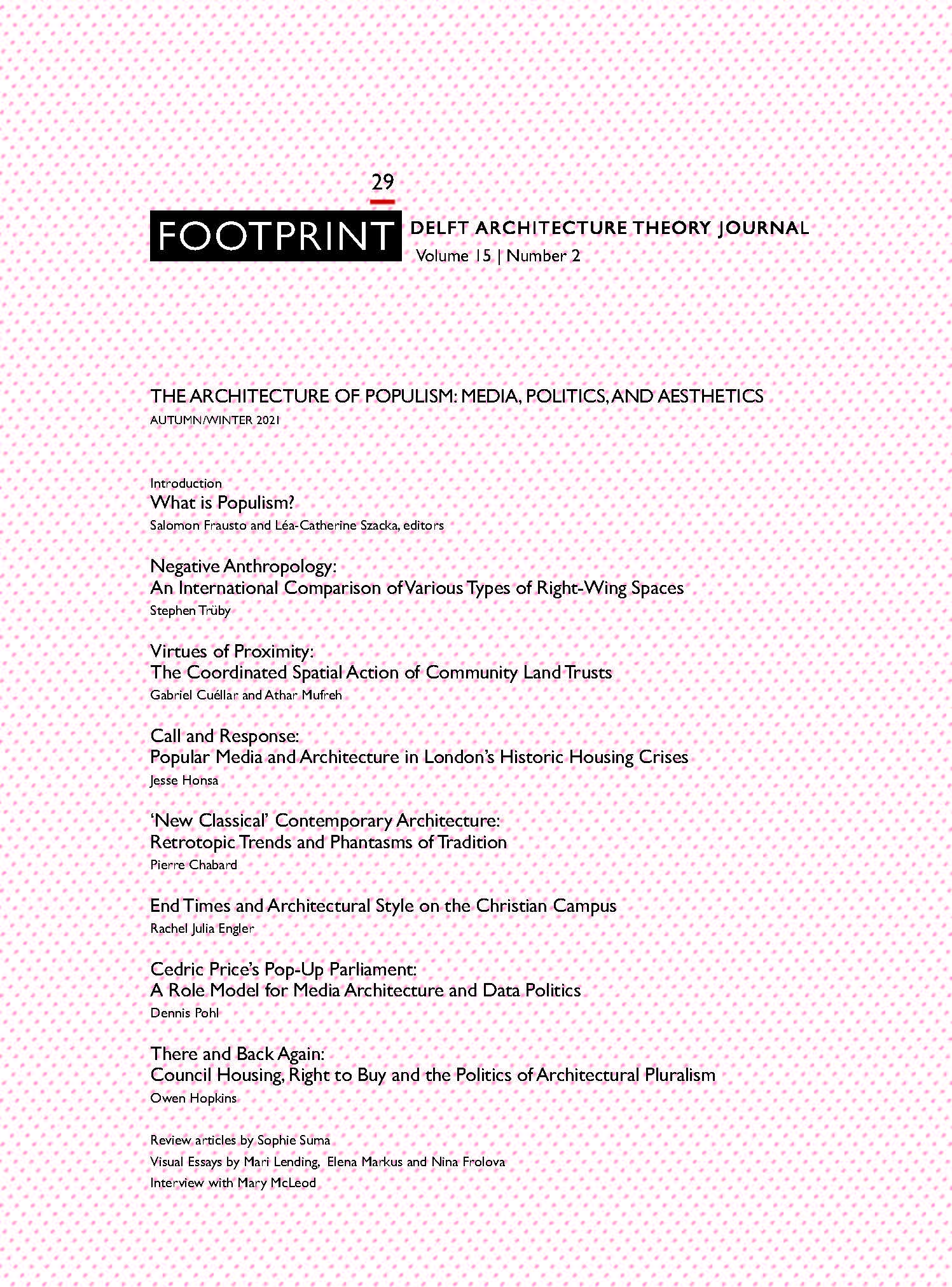Cult of war
The Main Cathedral of the Russian Armed Forces
DOI:
https://doi.org/10.7480/footprint.15.2.6128Abstract
The Main Cathedral of the Russian Armed Forces in Kubinka near Moscow is a quintessential example of the post-Soviet populist ideology, representating a mixture of ostensibly religious values with multiple secular cult objects.
References
Etkind, Aleksander and Mikhail Minakov, ed., Ideology After Union: Political Doctrines, Discourses, and Debates in Post-Soviet Societies, (Stuttgart: ibidem, 2020).
Gill, Graeme, Symbols and Legitimacy in Soviet Politics (Cambridge: Cambridge University Press, 2011).
Rovira Kaltwasser, Cristobal, Paul Taggart, Paulina Ochoa Espejo, Pierre Ostiguy, eds., The Oxford Handbook of Populism, (Oxford: Oxford University Press, 2017).
Yurchak, Alexei, Everything Was Forever, Until It Was No More: The Last Soviet Generation (Princeton and Oxford: Princeton University Press, 2005).
Downloads
Published
Issue
Section
License
Copyright (c) 2022 Elena Markus, Nina Frolova

This work is licensed under a Creative Commons Attribution 4.0 International License.
- Authors retain copyright and grant the journal right of first publication with the work simultaneously licensed under a Creative Commons Attribution License that allows others to share the work with an acknowledgement of the work's authorship and initial publication in this journal.
- Authors are able to enter into separate, additional contractual arrangements for the non-exclusive distribution of the journal's published version of the work (e.g., post it to an institutional repository or publish it in a book), with an acknowledgement of its initial publication in this journal.





